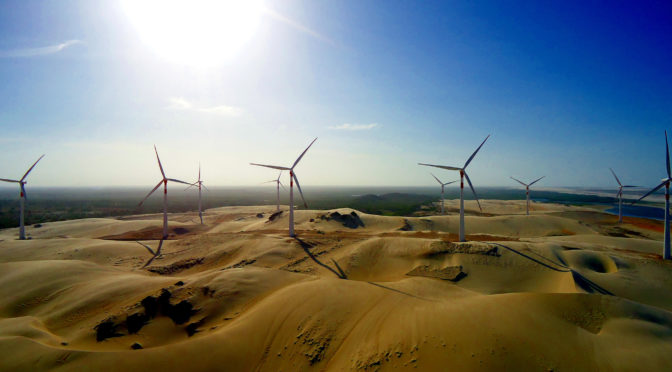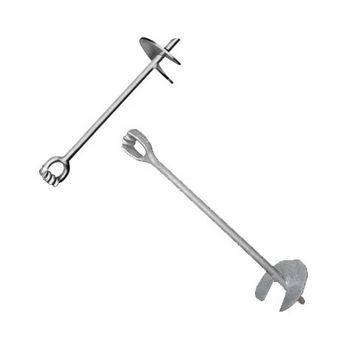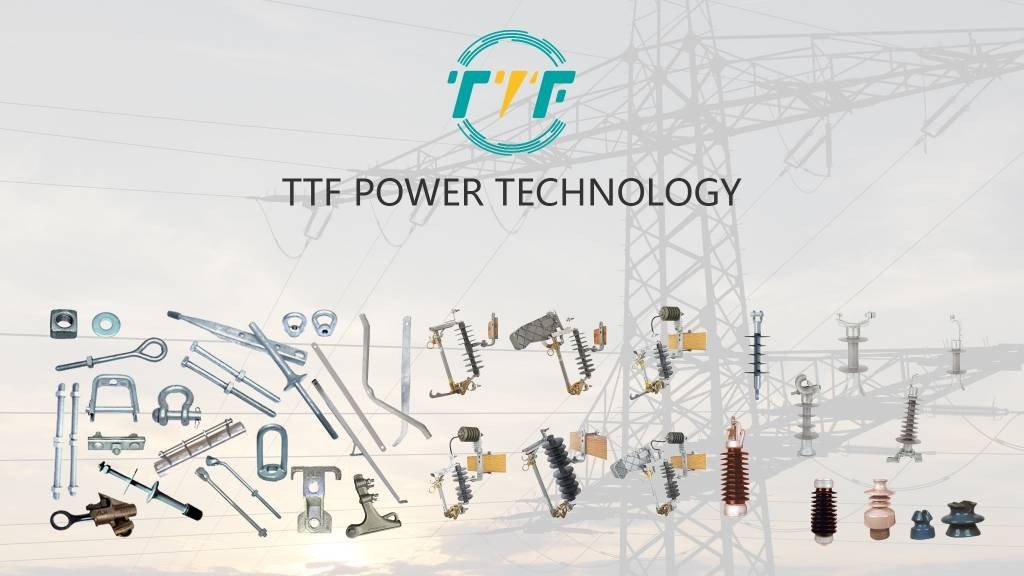
Brazil has been a leader in renewable energy in South America, with a focus on hydroelectric power, wind, and solar energy. Recently, Darby International Capital inaugurated a 112.5 MW Kairos wind park in Icapui, Brazil. This is a significant development in the renewable energy sector in South America. This development features 25 wind turbines with an output enough to meet the demand of energy in the region. Darby International Capital’s involvement highlights the increasing role of private debt investors in financing renewable energy projects in emerging markets. The project shows the benefits of the renewable energy sector in South America, which attracts international investors. The Kairos wind park is expected to generate clean energy to contribute to energy security and reduce reliance on fossil fuels. No wrench screw anchors provides secure grounding for utility poles and guy wires supporting wind power.
The success of the Kairos wind park could pave the way for more private investments in renewable energy. The development of such projects will play a role in meeting regional and international climate targets while driving economic growth. Most wind farms in Brazil are installed in areas where soil conditions vary. No wrench screw anchors work well in loose or soft soils where driving traditional anchors might be difficult. The anchors reduce the environmental footprint compared to traditional foundation methods. No wrench screw anchors are crucial for securing transmission lines, providing stability, cutting costs, and ensuring rapid deployment. This will aid in scaling Brazil’s wind energy sector efficiently.
The role of no-wrench screw anchors as used in wind power development in Brazil
No wrench screw anchors provide efficiency, cost-effectiveness, and environmental benefits. The anchors enable efficient and sustainable wind power development in Brazil. With continued growth of renewable energy, the use of no-wrench screw anchors will help meet its energy and environmental goals. Discussed below are the functions of no-wrench screw anchors in wind power development in Brazil.

- Foundation installation for wind turbines—no wrench screw anchors screw directly into the ground to provide a stable and secure base for the turbine. This is crucial for areas with challenging soil conditions such as sandy or loose soils.
- Speed of installation—the installation process is faster and needs less heavy machinery compared to traditional foundation methods. This reduces the risk of delays due to weather conditions.
- Environmental benefits—no wrench screw anchors have lower environmental impact compared to traditional foundation methods. Screw anchors can be more easily removed, and the land restored to its regional condition, promoting sustainable land use.
- Structural integrity—no wrench screw anchors provide load-bearing capacity and stability to ensure the structural integrity of wind turbines. They are designed to withstand the dynamic loads and stresses imposed by wind turbines.
- Adaptability—no-wrench screw anchors are adaptable to various terrains and soil types, which makes them suitable for the diverse geographical conditions in Brazil.
- Cost-effectiveness—no wrench screw anchor needs fewer materials and less labor, leading to lower project costs.
Benefits of the wind park development in Brazil’s energy sector
The Kairos wind park in Brazil offers several benefits to Brazil’s energy sector. The benefits align with Brazil’s broader goals of expanding renewable energy, enhancing energy security, and promoting sustainable development. No wrench screw anchors secure electrical infrastructure and transmission lines. Here are the benefits of wind park development in Brazil.

- Increased renewable energy capacity—the 112.5 MW Kairos wind parks add a substantial amount of clean energy to Brazil’s electricity grid. This helps diversify the energy mix and reduces reliance on fossil fuels. Wind energy complements the existing renewable energy sources, contributing to a more balanced and resilient energy system.
- Reduction in greenhouse gas emissions—the wind park avoids the emissions related to fossil fuel-based power generation. This helps Brazil meet its climate commitments under the Paris Agreement.
- Energy security—the project development enhances Brazil’s energy security by increasing domestic energy production and reducing dependence on imported fuels.
- Economic growth—the construction and operation of the Kairos wind park creates jobs in engineering, maintenance, and construction. This helps stimulate local economies in Ceara, which has become a hub for wind energy development in Brazil.
- Technological advancements and innovation—the development of the Kairos Wind Park incorporates modern wind turbine technology and efficient installation methods. This innovation drives technological progress in Brazil’s renewable energy sector.
